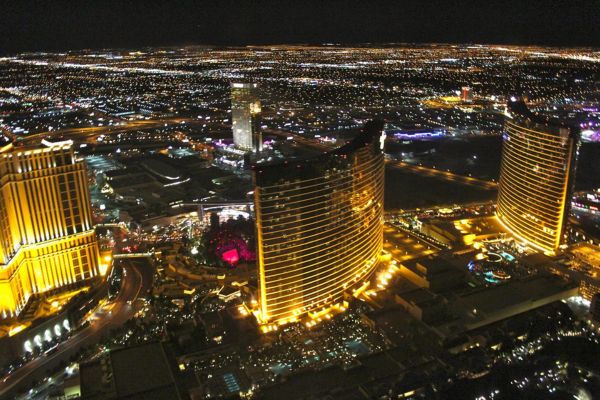Moving to Las Vegas means getting used to a lot of things – 24/7 everything, people from all over the world, and summers that feel like living inside an oven. But one thing that catches most newcomers off guard is how different car insurance works in Nevada compared to wherever they came from.
The desert does weird things to cars. The tourists do weird things to traffic. And the locals? Well, they’ve adapted to both, which means they drive differently than pretty much anywhere else in the country.
Vegas Drivers Are a Special Breed
Anyone who’s driven on I-15 during a weekend knows what Vegas traffic really looks like. There’s the guy from Minnesota who’s never seen this many lanes of traffic in his life, driving 45 mph in the left lane. There’s the rideshare driver making sudden stops to pick up passengers. And there’s the local in a lifted pickup truck weaving between cars like he’s late for work – which he probably is.
The Strip brings out the worst in everyone. Rental cars everywhere, people stopping suddenly because they see something shiny, and pedestrians who think they can just walk into traffic. It’s chaos on a good day.
Summer makes everything worse. When it’s 118 degrees outside, people get cranky. Air conditioning breaks down. Cars overheat. Tires blow out on the freeway. Emergency rooms see more heat exhaustion cases, and insurance companies see more claims.
Construction never stops. I-15 has been under construction for what feels like decades. The 215 always has something going on. Surface streets get torn up and rebuilt constantly. Orange cones are basically part of the landscape now.
Nevada’s Insurance Rules Are Pretty Basic
Nevada’s auto insurance requires drivers to carry $25,000 per person for injuries, $50,000 per accident, and $20,000 for property damage. That might sound like a lot, but it’s really not.
One ambulance ride in Vegas can cost $2,000. A few hours in the ER? Easily $10,000 or more. If someone gets seriously hurt, $25,000 disappears fast. And $20,000 for property damage doesn’t go far when pickup trucks and SUVs cost $40,000 or more.
Most people just get the minimum because it’s cheapest. That’s fine until something bad happens, and then they find out just how expensive being cheap can be.
What Makes Rates Go Up or Down
Where someone lives in Vegas makes a huge difference. Living near the Strip or downtown usually means higher rates because there are more accidents and more crime. Places like Summerlin or Henderson typically have lower rates because they’re considered safer.
Driving record is obvious – more tickets and accidents mean higher rates. But credit score? That surprises people. Nevada lets insurance companies use credit scores, and the difference between good credit and bad credit can be hundreds of dollars a year.
The car matters too. Sports cars cost more to insure. So do luxury cars and anything that gets stolen a lot. A basic sedan or SUV with good safety ratings usually gets better rates.
Age is tricky. Young drivers pay more because they crash more. But older drivers sometimes see their rates go up too, especially after they hit certain ages.
Coverage That Actually Matters
The state minimums are just that – minimums. Most people need more than that. Comprehensive coverage handles things like theft, vandalism, and weather damage. In Vegas, that means protection against extreme heat damage, flash floods, and the occasional hail storm.
Collision coverage pays for accident damage. Anyone with a car loan has to have this anyway, but even people who own their cars outright should think about it.
Uninsured motorist coverage is important because there are drivers on Vegas roads who don’t have insurance, even though they’re supposed to. This coverage protects against those situations.
Personal injury protection covers medical expenses no matter who caused the accident. For people with good health insurance, it might not be necessary. For people without, it’s crucial.
Gap insurance makes sense for anyone with a car loan. It pays the difference between what insurance covers and what’s still owed on the loan if the car gets totaled.
How to Pay Less Without Getting Screwed
Bundling policies usually saves money. Most companies give discounts for having both car and home insurance with them. The savings can be worth it, especially for homeowners.
Safe driving courses sometimes get discounts. Not all companies offer this, but taking a defensive driving course can reduce rates or remove points from a driving record.
Cars with safety features often get discounts. Anti-theft devices, good airbag systems, and electronic stability control can all lower rates. Some companies give better rates for cars with high safety ratings.
Paying the whole premium at once instead of monthly saves money. Most companies charge fees for monthly payments that add up over the year.
Higher deductibles mean lower monthly payments. Choosing a $1,000 deductible instead of $500 can reduce costs, but drivers need to make sure they can actually afford the higher deductible if something happens.
Shopping Around Actually Matters
Insurance companies don’t all think the same way about risk. One company might think someone is high-risk while another company thinks they’re fine. Rates can be completely different for the exact same coverage.
Online quotes are convenient, but they don’t tell the whole story. Actually talking to agents can reveal discounts or coverage options that don’t show up online. Local agents understand Vegas-specific problems and can suggest appropriate coverage.
Reading the actual policy documents is boring, but it prevents nasty surprises later. Understanding deductibles, coverage limits, and what’s not covered helps avoid problems when filing claims.
When Things Go Wrong
Vegas is a magnet for stupid accidents. Casino parking lots are like demolition derbies with people backing into each other while they’re distracted thinking about their gambling losses. Shopping centers and tourist traps aren’t much better – everyone’s in a hurry or doesn’t know where they’re going. Hit-and-runs happen constantly because tourists don’t want to deal with cops and paperwork when they’re supposed to be on vacation.
The weather here wants to kill cars in creative ways. Monsoon season turns streets into rivers and underpasses into swimming pools. Cars get swept away or just drown sitting in parking lots. The heat’s so brutal it literally explodes tires and makes engines give up. Then there’s the dust storms that turn the whole city into a foggy nightmare where nobody can see two feet in front of them, causing massive pileups on the freeways.
Nevada’s comparative negligence laws mean insurance companies love to play the blame game. They’ll find ways to pin part of the fault on everyone involved in an accident, which means they pay out less money. Someone might get rear-ended at a red light but still get blamed for “contributing” to the accident somehow, just so the insurance company can cut their payout.
Vegas accidents are messier than most places because half the people involved are tourists who don’t know the area, and the other half are locals who drive like maniacs because they’re used to dodging confused visitors all day.
Finding What Works
Choosing car insurance Las Vegas drivers actually need means balancing cost, coverage, and service. The cheapest option isn’t always the best deal if it provides terrible coverage or awful customer service, but with companies like GoAuto Insurance, you don’t need to worry about this – get cheap auto insurance with best claims servicing!
Reading customer reviews and checking complaint records with Nevada’s insurance department helps identify which companies actually take care of their customers. Financial stability matters too – there’s no point paying premiums to a company that might not be around when a claim needs to be filed.
Reviewing policies regularly makes sense because circumstances change. Getting married, buying a new car, moving to a different part of the valley, or changing jobs all affect insurance needs and rates.
Vegas throws challenges at drivers that don’t exist in most other places. The extreme weather, constant tourist traffic, and rapid growth create insurance needs that require some thought. Understanding the options and choosing appropriate coverage protects both bank accounts and sanity when dealing with Nevada’s unique driving environment.



